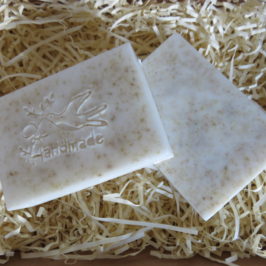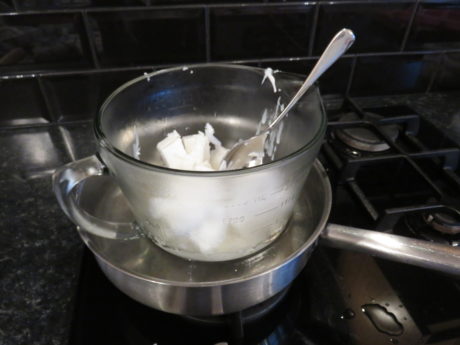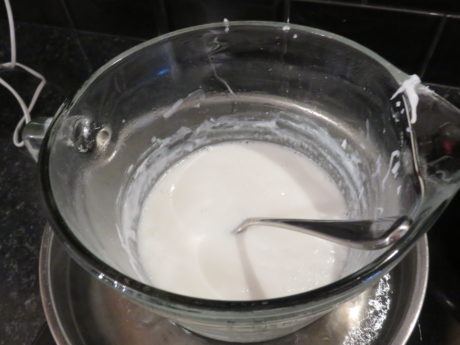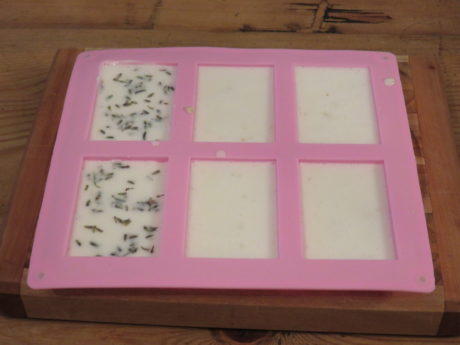
Soothing Goat Milk, Lavender, Oatmeal, and Vitamin E Soap Recipe for Eczema and Dry Irritated Skin
Ingredients
- 600 g goat milk melt and pour soap base
- 2 tsp colloidal oatmeal
- 1.5 tsp Vitamin E oil
- 1.5 tsp lavender essential oil
- 2 tsp dried lavender buds optional
- 1 large pyrex glass jug
- 1 large saucepan
Instructions
- Cut soap base into your heatproof bowl and place it into a saucepan filled with about 5 cm (2 inches) of hot water that is sitting over a medium-low heat.

- Make sure that none of the water from the saucepan gets into your soap or it will cause it to become rubbery.

- Gently stir until the ingredients have completely melted into a liquid and combined. Don't leave it sitting on the heat any longer than needed and let it get too hot, otherwise you can end up with rubbery soap.

- Remove the bowl from the saucepan and dry off the water from the outside of the bowl so it doesn’t drip onto your work surface and soap.
- Stir the soap to allow it to cool down for a few minutes, then stir in the vitamin E and lavender essential oil. If you add the essential oil when it is too hot, it will just evaporate and lose its scent.
- Add the colloidal oatmeal and dried lavender buds if using. Keep stirring it until the soap starts to cool down, then pour into the soap molds.
- Leave the soap in the molds for several hours at room temperature to firm up (don't place them in the fridge).

- Once completely hardened, you can use a soap stamp to decorate.
Notes
Tips:
- It's important that you don't overheat the soap or add any water as it will cause it to become rubbery.
- Melt and pour soap must be kept wrapped in plastic and stored in an airtight container after being removed from the mold, otherwise it will begin to sweat. The sweating is what happens between moisture and a humectant (the substance that preserves moisture). In this case, the humectant is glycerine. Glycerine in soap bases is a natural by-product and is a moisturising agent. Humectants attract/absorb moisture from the air which forms on the surface of the soap which causes it to 'sweat'.
- Allow the soap to set at room temperature. Don't place them in the fridge or freezer as this could cause sweating.